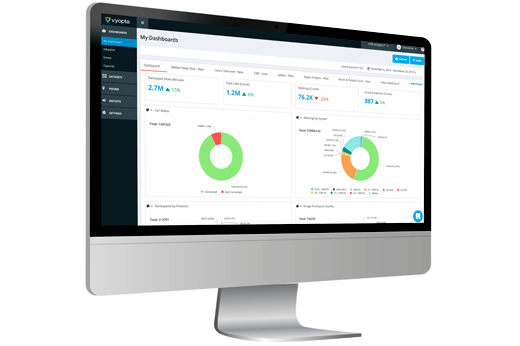There are still plenty of questions in the world of education and distance learning as K-12 and higher education organizations move forward with a mix of hybrid and entirely online teaching scenarios. With a winter spike in Covid-19 infections expected and budgets for the 2021 school year in the planning stages, education leaders are looking for answers to how to plan for distance learning funding priorities, how to best measure the effectiveness of online classes, and determining how to get their classes accredited to receive full funding at the state and local levels.
Teachers participating in the U.S. Distance Learning Association have shared stories of their successes and frustrations in the move to distance learning, and in the nine months since the onset of the Covid-19 pandemic education officials are now looking for ways to measure what approaches are working best.
Kjierstin Layton, Vyopta’s channel practice director for state and local education and a board member at the USDLA, said budget cycles that start next summer will need to provide distance learning funding for software and hardware upgrades needed for the long term.
That means hard data around performance – including enrollment, participation rates and overall quality of connection for all students – is necessary to justify budget requests. There is also the question of whether there will be a second federal CARES Act related to Covid-19 relief, and what kind of funding that legislation would include for distance learning enhancements.
“There will always be an option in public school systems to provide a virtual environment, and so now these schools have to find a new way to analyze what is the best roadmap for them with Vyopta providing the intelligence behind what their current performance looks like on one singular platform or multiple, and then being able to validate that spend later,” she said.
“Am I going to go invest further or request dollars for a platform that is working well in my institution? We need to ensure success and ensure that both the student and the educator are having the best experience possible and the easiest point of access on whatever platform that district is now being funded for.”
Google Meet Coverage Helps Planning for Distance Learning Funding
Vyopta’s recent announcement of data and analytics coverage for Google Meet has direct value to the distance learning sector because Google is a long-trusted name and highly used platform in schools. With the ability for users to finally get a detailed look at the quality of connections and online meetings.
Google Meet users need to have the ability to track data for longer periods of time so teachers and administrators can look at a semester, a whole year, or more finely sliced time periods, said Jaiganesh Lakshmisundaram, a product manager for Vyopta.
“You need to actually see a trend over like an entire year or a semester, however you want to pitch this around from an education standpoint. It’s more valuable to see the trend, create reports and ship those reports to those who get the most benefit,” he said.
Layton said Google Meet has served as the “gateway” option for many school districts that were forced to quickly make their first attempt at distance learning in the spring as the Covid-19 virus began to spread. With Vyopta’s data, those schools can parse what classes, departments and use cases used the most video minutes effectively, which can help them build their plan for the coming years with the possibility that online learning will need to remain as an option.
“Vyopta provides the ability to understand which cost centers had the most utilization, and they were able to validate who was using what minutes,” she said.
That’s really important because if you look back, you need to know the data from day one, week one semester one, quarter one, whatever it may be, where are you getting the most utilization on the platform? Also when it comes to the public school system you have to be able to say that the hours were accredited. Just knowing that you’re consuming 40,000 video minutes gives you nothing.”
For CARES Act resources specific to the education, telemedicine, and judicial services industries, access our resource kit.
Chad Swiatecki is a business writer and journalist whose work has appeared in Rolling Stone, Billboard, New York Daily News, Austin Business Journal, Austin American-Statesman and many other print and online publications. He lives in Austin, Texas and is a graduate of Michigan State University. Find him online on LinkedIn.








